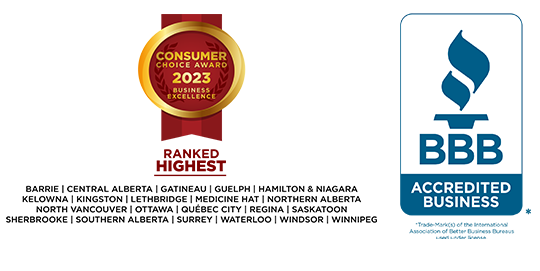Why you should go to a Licensed Insolvency Trustee when you have debt problems
I recently read a few articles written by debt consultants who discourage readers from going to see a Licensed Insolvency Trustee (LIT) when they find they have debt problems. These debt consultants acknowledge that they are not LITs and cannot offer the services that only LITs are legally authorized to provide, such as filing bankruptcies or consumer proposals. However, they recommend that debtors come to see them first, ostensibly to ensure that the debtor’s interests will be protected if they later have to file a proposal or bankruptcy through an LIT. Some debt consultants suggest that an LIT will only focus on the creditors’ interests, or the LIT’s own remuneration, when recommending a debt solution.

There are approximately 1,000 LITs in Canada; all are licensed by the federal government. Whether it is a small personal bankruptcy or a large CCAA company restructuring, an LIT is involved. The educational requirements to become an LIT are rigorous. In addition to this formal training, most LITs also possess accounting or law credentials. Our profession is regulated by both the federal government — The Office of the Superintendent of Bankruptcy (OSB) — and our professional association — the Canadian Association of Insolvency and Restructuring Professionals (CAIRP). We are held to a strict code of ethics, which are set out in both the Bankruptcy and Insolvency Act and our association’s Standards of Professional Practice. By comparison, many debt consultants have modest training and credentials (if any), are not held to any particular standards, and there is little oversight of what they do or how they operate.
When I (and the many LITs I know personally at MNP Ltd.) meet with someone with debt problems, we look for the simplest and least expensive way of solving the issue. Sometimes all that is needed is some improved budgeting or refinancing. Since most LITs charge no fee for the first consultation, that advice is free. We are prohibited by law from receiving any sort of “kickback” should we recommend that the debtor see a mortgage broker or another refinancing professional. If a more formal debt relief solution is required, such as a consumer proposal or bankruptcy, we will discuss those options in detail, so that the debtor can make an informed choice. The amount an LIT gets paid for administering a proposal or bankruptcy, should that be the debtor’s choice, is set by law — and is the same for all LITs across Canada.
When a person files a consumer proposal or bankruptcy, they are required to provide full financial disclosure to the LIT. In fact, the legal documents which summarize their financial position are signed under oath. This is a reasonable expectation. If a person wants their creditors to accept less than full payment on the credit they received, the person needs to show that they are truly unable to pay back what they owe within a reasonable timeframe.
A consumer proposal is an offer to settle debts over time, often for less than the full balance. This is usually accomplished by monthly payments over a period of five years or less. A “yes” vote by the creditors representing more than 50 percent of the dollars owed is required for a consumer proposal to be accepted. The amount someone offers to their creditors in a consumer proposal is based on two considerations. First, the proposal should result in creditors receiving more money than if the person were to file bankruptcy. Figuring out the estimated return to creditors in a bankruptcy is a fairly straightforward calculation, provided the LIT has the person’s full financial picture. Second, the monthly proposal payment should be fair and reasonable in relation to the person’s income, taking into account normal (but not lavish) expenses. Creditors will review a proposal debtor’s expenses to see if any appear excessive, and may vote against the proposal, or counteroffer with a higher payment, if they deem the debtor’s expenses unreasonable. Based on these two considerations, an LIT will recommend that a debtor make an offer the trustee believes is fair and that the creditors are likely to accept. In my experience, LITs who are provided with the same set of financial facts often arrive at a similar recommendation. However, a debtor is free to offer another amount if they prefer, even if it is inconsistent with the advice of the trustee. Ultimately, the choice to accept or decline the proposal rests with the creditors.
Yes, it’s true that the fees allowed by law to an LIT for administering a proposal are based in part on a percentage of the payments the debtor makes into the proposal. Some debt consultants suggest that because of this, LITs are inclined to push debtors into higher proposal payments so that the LIT gets paid a higher fee. Again, speaking for myself and the many LITs I know, our fees are rarely a consideration. First and foremost, the goal is to find a debt solution that both satisfies the creditors and fits the debtor’s budget. Since determining a reasonable proposal offer is largely mathematical in nature, and ultimately it is the debtor’s choice as to what sort of offer they make, it does make one wonder what advice a debt consultant would insist a debtor needs before going to see an LIT. Debt consultants charge fees for their advice. Assuming the information they offer is fundamentally the same as an LIT would provide, the debtor may end up paying more than they should to find the same solution.
Besides paying more than necessary for debt advice, of greater concern is that a debtor might receive incomplete or improper advice, and little accountability. With no formal training or oversight of debt consultants, it is a distinct possibility. Some debt consultants have been known to coach their clients to withhold information so as to pay even less to their creditors than what is legislatively required. Not only could this potentially put the debtor in jeopardy, but it also undermines the Canadian insolvency system. Canadian insolvency law gives people fair relief from their debts. Those with lower incomes and those who own fewer significant assets, generally pay less back to their creditors. Most debtors who file a bankruptcy or proposal pay back less than 50 cents of every dollar of debt they owe — with no additional interest during the time they are making their payments. All in all, that’s a pretty fair deal.
For more information about bankruptcies and proposals, and the role of Licensed Insolvency Trustees, consult the OSB publication “Consumed by Debt?” or the MNP Ltd. website at mnpdebt.ca.

